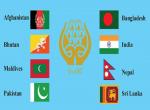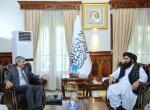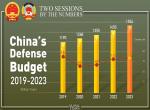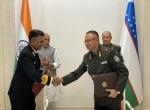ASEAN took a landmark decision to adopt the ASEAN Outlook on Indo-Pacific on June 22, 2019 after more than a year of deliberations. Located centrally, in one of the most dynamic regions of the world today, ASEAN sees Southeast Asia as the conduit and portal of geo-political and geo-strategic shifts in the Indo-Pacific. Hence this policy document was long time coming. The delay was expected, as it had to strike a balance between opposing aspirations, especially of competing great powers in the region and own interests. Obviously, the areas of convergence would be easy to steer. But it would be interesting to see how ASEAN tackles the areas of divergences, where much of the challenges and opportunities would lie.
Salient Points
ASEAN sees the Indian Ocean and the Pacific as an integrated and inter-connected region where it should play a central and strategic role, in developing and shaping the regional architectures. It envisions an Indo-Pacific that promotes dialogue, development, prosperity; as also emphasises on the importance of the maritime domain. ASEAN wishes to play a key role in preserving the stability in the Indo-Pacific region by guiding cooperation; creating an enabling environment for peace and freedom; building communities like the East Asia Summit (EAS); and stressing other priority areas like connectivity and sustainable development goals (SDGs). It also envisages to optimise and strengthen some of the existing forums such as the EAS, the ASEAN Regional Forum (ARF), the ASEAN Defence Ministers Meeting Plus (ADMM-Plus), the Expanded ASEAN Maritime Forum (EAMF) and other ASEAN-Plus One mechanisms.
Principles – The ASEAN’s outlook for Indo-Pacific will be guided by the principles of ASEAN centrality, openness, transparency, inclusivity, rules-based framework, good governance, respect for sovereignty, non-intervention, Treaty of Amity and Cooperation in Southeast Asia (TAC), equality, mutual respect, trust and international laws, such as UN Charter, the 1982 UN Convention on the Law of the Sea, and other relevant UN treaties and conventions.
Primary areas of cooperation- ASEAN can be expected to coordinate the implementations of its Indo-Pacific outlook on a wide range of activities. But, the priority areas identified are maritime cooperation, connectivity, SDG and economy.
- Maritime - Maritime issues include the resolution of disputes, promotion of safety, freedom of navigation and over flight, non-traditional threats, management of resources, development of blue economy, cooperation on marine pollution, research, and capacity and capability building.
- Connectivity – ASEAN desires all present and future projects in the Indo-Pacific to complement the Master Plan on ASEAN Connectivity (MPAC) 2025. It wishes to mobilise resources by promoting Public-Private-Partnership (PPP). ASEAN Sky and ASEAN Smart City Network (ASCN) are some of the novel preposition included in the outline. The possibilities for synergising sub-regional projects will also be explored, especially those under the Bay of Bengal Initiative for Multi-Sectoral, Technical and Economic Cooperation (BIMSTEC), Brunei Darussalam-Indonesia-Malaysia-Philippines East ASEAN Growth Area (BIMP-EAGA), Mekong cooperation, Ayeyawady-Chao Phraya-Mekong Economic Cooperation Strategy (ACMECS) and Indian Ocean Rim Association (IORA).
- Other Possible Areas of Cooperation – Other possible areas of cooperation outlines include the South-South Cooperation, digital economy, micro-small-medium enterprises, science and technology, climate change, active aging and innovation, Regional Comprehensive Economic partnership (RCEP), and regional and global value chains.
The Promise: Regional Order in the Indo-Pacific
One of the highlights of a year-long negotiations leading to this event has been the elevation of Indonesia as an indisputable regional leader. Release of such a sensitive policy statement was not possible without strong leadership, especially when Singapore was dithering at the last moment. Indonesia has demonstrated that it is capable of steering an autonomous vision by its own steam despite the pulls and pushes of great powers. Concomitantly, it has also been able to evolve a regional consensus that is in unison with its own strategic vision. Leadership based on consensus and not coercion is a mark of hegemony, early shoots of which are already palpable in Southeast Asia. In an anarchic world of Indo-Pacific, Indonesia’s consensual leadership shows remarkable promise for shaping a stable regional order. It is a feat that neither China nor Japan has achieved in East Asia; neither has Australia been able to accomplish it in the Oceania; nor has India realised such a support in South Asia.
Challenges Abound
Central Role – ASEAN views Asia-Pacific and Indian Ocean regions as an integrated and inter-connected region with ASEAN playing a central and strategic role. This is bound to poses a stiff challenge from outside. ASEAN is pitted against major powers of the world who are intensely competing for strategic influence in the region. In comparison, ASEAN does not have the material (economic and military) might to walk its talk today. But the plausibility of such a scenario cannot be ruled out and can be predicated on the robust growth rate recorded by ASEAN.
Openness – Erstwhile National Security Adviser of the US, H.R. McMaster, had elucidated openness as freedom of navigation, rule of law, freedom from coercion, respect of sovereignty, private enterprise, and open market. This conceptual framework continues to be defied by most nations, especially in the South China Sea (SCS). Self-help, maritime assertiveness and coercion has been the norm with all who possess the capability to project maritime power, however small it may be. Moreover, unbridled private enterprise and open market has been the bane of globalisation and has widened social disparities between and within nations. So, an open market anchored on profit and not centered on sustainable development of the society, is indeed dangerous. The negotiations at the RCEP is case in point. Navigating these cracks and fault lines will indeed be a daunting task for ASEAN.
Inclusivity – Several countries have developed their own ideas of Indo-Pacific. Japan unveiled the Free and Open Indo-Pacific (FOIP) strategy in August 2016. Prime Minister Modi encapsulated India’s vision on March 12, 2015 in Mauritius as Security and Growth for All in the Region (SAGAR). The US renamed its Pacific Command (PACOM) as the US Indo-Pacific Command (USINDOPACOM) on May 30, 2018. During the annual address on February 21, 2019, President Putin articulated Russia’s vision of Indo-Asia-Pacific. China has still not endorsed the concept of Indo-Pacific and prefers to deal with the region in manageable tranches. Ironically, no one has asked what smaller nations want out of the Indo-Pacific concept, or do they want it at all?Sri Lanka seem firmly opposed to it. So, conflating disparate visions will be a tall order for ASEAN.
Rules Based Framework - The United Nations Conventions on Laws of the Seas, 1982 (UNCLOS), are Convention on International Regulations for Preventing Collisions at Sea, 1972 (COLREGs) are international provisions that are universally respected by merchant men and warships. In addition, the Western pacific has its own version of the Code of Unplanned Encounters at Sea (CUES) since 2014. Despite the multitude of norms already in place, encounters and collisions at sea have been recurrent. All hopes are now pinned on the Code of Conduct (COC) for SCS. The outcome of these negotiations will hopefully pave the way for peace in the maritime domain.
Concluding Remarks
The ASEAN Outlook for Indo-Pacific has the sophistication of transcending Southeast Asia and providing a ballast for the entire Indo-Pacific region. It balances aspirations of all and affirms Indonesia’s leadership. It also poses faith in diplomacy to circumvent security dilemmas and defuses the ongoing balance of power struggle. Such an approach aims to reduce cost of arms-race and spares resources for more pressing domestic and global issues. However, The ASEAN outlook is not without its shortcoming. It is pitted against major powers of the world who are intensely competing for strategic influence in the region. ASEAN does not have the material (economic and military) might to walk its talk. ASEAN’s track record on cohesiveness has not been encouraging. Inability to arrive at a joint statement on the Permanent Court of Arbitration (PCA) judgment in 2016 stands as a reminder. Delays in the COC negotiations also exposes the ASEANs ability to deliver.
Despite these infirmities the Outlook document is instructive for policy makers in the Indo-Pacific. Evaluating every move of own partners and neighbours from the myopic filters of security and zero-sum game is fraught with danger and can lead any developing nation into bankruptcy. Striking the right balance between security and development is not only prudent for countries but is also reassuring to its neighbours and the region. Short-term one-upmanship is an unsustainable foreign policy and self-defeating in nature. Achieving regional leadership is a constitutive process, requiring consensus, building trust, and making long-term visions. A few leafs from Indonesia’s deft diplomacy could serve as a lesson.
Image Source: https://assets.bwbx.io/images/users/iqjWHBFdfxIU/iFabgG3PZ4Dw/v1/1000x-1.jpg










Post new comment